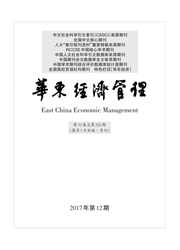

 中文摘要:
中文摘要:
高速铁路建成是否对区域经济发展产生影响,需要从实证角度验证。文章以长三角城市群为例,运用2006-2013年地级及以上城市数据,运用双重差分方法分析高速铁路建设对长三角城市群人均GDP增长率和城乡差距的影响。单变量分析结果为:高速铁路建成后,对人均GDP增长率有显著性提高,可能对城乡差距有扩大的趋势。双重差分计量模型研究结果进一步验证单变量分析结果:在当前中国经济整体进入新常态背景下,从短期来看,高速铁路对长三角城市群经济增长有促进作用;高速铁路建成一定程度上扩大了高铁城市城乡差距。基于部分控制变量在统计检验上不显著,对高铁城市经济增长影响因素分析中,要结合自身特征来考察。
 英文摘要:
英文摘要:
Whether the completion of high-speed rail has an impact on regional economic development needs to be verified empirically. By taking the city clusters in the Yangtze River Delta as the case, using the data of cities at prefecture-level or above from 2006 to 2013 and applying the estimation method of difference and difference, the paper analyzes the impact of high-speed rail construction on the per capita GDP growth rate and urban-rural income gap in the city clusters of the Yangtze River Delta. The results of univariate analysis show that the per capita GDP growth is significantly improved, and the gap between urban and rural areas may be widened after the completion of high-speed rail. The research results of difference in difference measurement model further validates the results of univariate analysis. In the context of the China' s economic develop- ment entering into a new normal, from the short term, high-speed rail has a positive impact on the economic growth of the city clusters in the Yangtze River Delta, the completion of high-speed rail has enlarged income gap between urban and rural areas to some extent. Based on some control variables are not significant in the statistical test, it needs to take its own characteristic into consideration when analyzing factors affecting high speed rail urban economic growth.
 同期刊论文项目
同期刊论文项目
 同项目期刊论文
同项目期刊论文
 期刊信息
期刊信息
